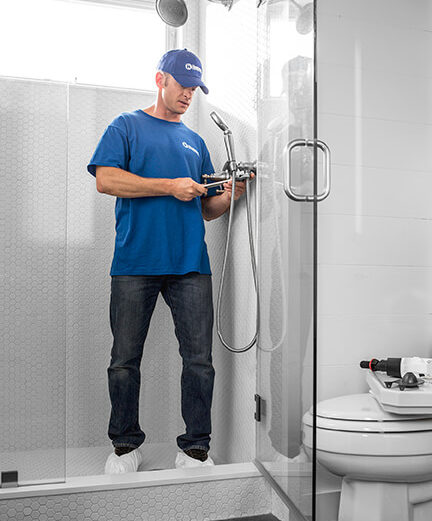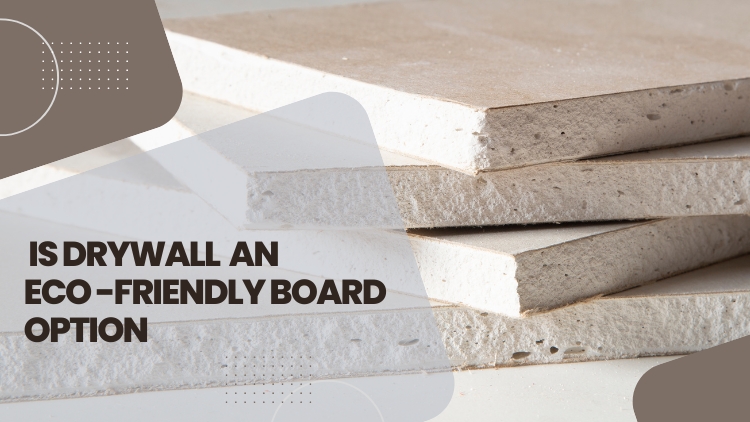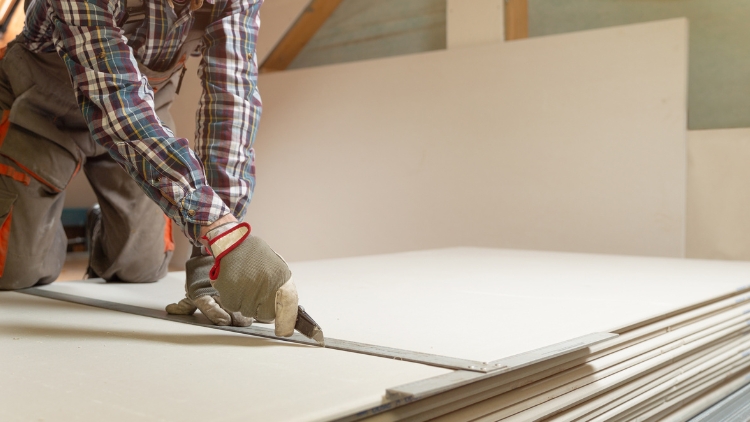We offer a wide range of services for that fresh look, or just maintenance or updates to keep your home functioning and safe. Regardless of the size of the job, we have a craftsman that can tackle it.

Drywall / June 10, 2024

When it comes to building or renovating our homes, there’s a growing demand for eco-friendly options that minimize environmental impact without skimping on quality. Homeowners are increasingly aware of the need to make sustainable choices, and a major area of interest is the selection of building materials. The industry has responded to this demand by emphasizing its eco-friendly attributes, but how does drywall measure up against other traditional building materials?
In this insightful exploration, we’ll delve into the eco-friendliness of sheetrock from production to installation. We’ll compare drywall with other materials, assessing their environmental impact, manufacturing methods, and disposal to find the greenest choice for your construction project.
Drywall may seem simple, but it has great potential as an eco-friendly building material. Known as gypsum board, drywall sheets provide a strong and versatile internal wall structure, making them popular. Key eco-friendly properties include fire resistance and soundproofing, leading to energy savings through better insulation.
Drywall is primarily composed of gypsum, a mineral naturally present in the earth’s crust. The production process is considerably less toxic and energy-intensive than alternatives like cement board or plaster. Furthermore, its component materials can often be sourced locally, reducing the carbon footprint associated with transportation.
Drywall’s base ingredient, gypsum, can be mined from natural deposits or, in some cases, derived from the waste by-products of industrial processes, making it a renewable and versatile material. The manufacturing process, even when synthetic gypsum is used, generally consumes significantly less energy than that of many other building materials.
The efficiency of drywall production contributes to its eco-friendliness. Gypsum is ground into a fine powder, which is then mixed with water and other additives to form a thick paste. The paste is then spread between two sheets of heavy paper, creating the board. This simple but effective process is less resource-intensive than the making of alternative boards, such as particle board, which requires the binding of wood particles with adhesives that can release harmful VOCs. Volatile Organic Compounds (VOCs) are a group of chemical compounds that easily evaporate at room temperature, releasing potentially harmful pollutants into the air. These compounds can come from various sources such as paints, cleaning products, pesticides, building materials, and furnishings.
One of the significant factors that make drywall a sustainable option is its potential for recyclability. During construction, off-cuts and waste material can be returned to the manufacturer or recycling center to be repurposed into new drywall. This reduces the amount of waste sent to landfills and lessens the demand for freshly mined gypsum, preserving natural resources.
In the event of building demolition or renovation, the sheetrock can be cleanly separated from other materials and recycled, providing a significant advantage over competing materials with mixed components that are difficult to recycle. The increased availability of recycled drywall can also drive down costs and support a circular economy within the construction industry.
To truly understand drywall’s environmental benefits, we must compare it to other building materials. Alternative products like solid wood, metal, and plastic-based materials all have their own set of environmental considerations.
Resource Consumption
Drywall surfaces impress with their smaller resource footprint. While solid wood and similar products require felling entire trees, drywall gypsum can often be sourced with more discretion. Metal and plastic products, while often recyclable, come with higher manufacturing costs and environmental externalities.
Lifespan and Durability
When evaluating the longevity of building materials, drywall stacks up well against the competition. Properly installed and maintained drywall has a lifespan that can rival most other materials, especially in interior applications. Its durability reduces the frequency of replacements and, in turn, the environmental impact of ongoing manufacturing and disposal.
Disposal and Recycling
The ease of recycling drywall is a strong argument in its favor when considering the environmental toll. Traditional materials like wood may degrade in a landfill, adding to pollution, while plastics and metals may require energy-intensive processes for recycling. Drywall’s simple repurposing process contributes to its status as an environmentally sound choice.

What is the process for installing drywall? The manner in which a product is installed plays a crucial role in determining its environmental impact. By optimizing material usage and minimizing waste during the installation process, significant strides can be made toward sustainability, particularly in the realm of building materials. Precision and expertise in setting up interior walls can lead to more sustainable outcomes, amplifying the eco-friendly characteristics of this choice through efficient practices and conscientious resource management.
1. Initial Assessment for Optimized Material Usage
Experts begin the installation process by conducting a thorough assessment of the space. This initial step ensures precise measurements, leading to optimized material usage and a reduction in excess materials that could otherwise go to waste.
2. Careful Cutting & Fitting for Minimal Waste
The importance of precision in cutting cannot be overstated. By cutting materials to size with accuracy, less material is discarded, promoting a “use-what-you-need” approach that aligns with sustainable practices. This meticulous approach not only minimizes waste but also contributes to resource conservation.
3. Effective Utilization of Resources for Maximum Efficiency
Professionals trained in the art of installation understand the value of each sheet of material. They possess the know-how to arrange these sheets in a strategic manner that minimizes off-cuts and maximizes utilization. This strategic placement not only optimizes resources but also reduces the environmental footprint associated with excess waste.
4. Responsible Handling of Leftover Materials
Any remnants or leftover pieces from the installation process are managed responsibly. Rather than ending up in landfills, these materials are either repurposed in smaller areas of the project or returned to recycling centers. This commitment to recycling and waste reduction ensures that materials are given a second life, further bolstering the eco-friendliness of the installation process.
Choosing our team for your wall installation needs brings a plethora of benefits, ensuring that your project is executed with the highest level of professionalism and expertise. Our experts are recognized for their meticulous attention to detail in surface preparation, mastery of advanced application techniques, and profound knowledge of various products. Here’s how we distinguish ourselves from the rest
Our professionals prioritize thorough surface preparation as the foundation of a successful installation. By meticulously prepping each surface, we guarantee optimal adherence to materials, leading to exceptional durability and longevity. This critical step sets the stage for a flawless finish that stands the test of time.
Utilizing cutting-edge application methods, we ensure that materials are applied efficiently and effectively. Our expertise in advanced techniques not only enhances the durability of the installation but also results in an aesthetically pleasing look that surpasses expectations. Every stroke is guided by skill and precision to achieve a pristine outcome.
Our team’s comprehensive understanding of different wall solutions allows us to provide tailored recommendations for your space. We go beyond mere installation to suggest the most sustainable and suitable options, often proposing alternatives with lower environmental impacts. This insight ensures that your project aligns with eco-conscious practices without compromising on quality or aesthetics.
For the environmentally conscious homeowner, the choice between drywall and other building materials can be a critical one. In this comparison, we’ve seen the many ways that drywall excels as an eco-friendly option, from its manufacturing process to its potential for recycling. When it’s time to upgrade your home with new drywall, you can trust Handyman Connection Allen, near McKinney, to deliver a service that prioritizes sustainability and quality.
If you’re considering drywall for your next project and want to learn more about our local handyman services, don’t hesitate to reach out. Request an estimate today to start your eco-friendly home improvement journey with Handyman Connection in Allen.